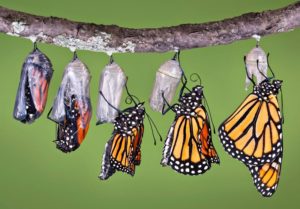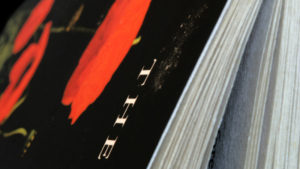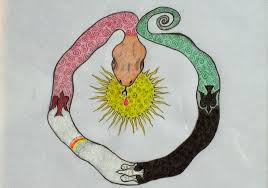Elements of Creating
In doing the research for my dissertation, I made a great discovery. What I find to be the secret to creating and manifesting what we desire, especially in writing, I call it fire and purpose. This is a concept that goes back to the Greek philosopher Heraclitus. He wrote about what he called fire and telos.
Fire
By fire he meant the source of the action or power. Richard Geldard, who wrote Remembering Heraclitus, said, “fire as a transforming energy”. Fire is a metaphor for passion, having what the alchemists later called a burning desire. That combines with telos.
Telos
Telos is focusing on the end purpose with intense concentration. Together they burn the path to creating anything we want.
Elements in Action
The notion of fire and purpose (telos) can be applied to writing our stories. William Blake, an English poet who was part of the Romantic movement, called it the creative will. This is similar to what Joseph Campbell, the mythologist, called willed introversion. It is an intense focus inward that activates the unconscious part of the creative process.
The Obstacles
We know that many writers report that it is easy to be swayed by doubt. It can cause them to get lost, abandon the pursuit and give up. Following the initial excitement of embarking on a new story we can end up in a space of uncertainty. I experienced when I was writing my dissertation,
What many do not understand is that it is a natural stage in the writing process. John Keats, another Romantic poet, referred to this as having the capacity to tolerate negative capability. By this he meant being able to stay with our effort even when we do not necessarily know where it is we are going. The uncertainty of not knowing where we are going and staying with it anyway requires trust in the process. Keats explained negative capability as those times “when a man is capable of being in uncertainties, mysteries, doubts, without any irritable reaching after fact and reason”.
 In that sense, navigating the creative process requires character. Having a way to guide us, to tolerate the negative emotions, remain hopeful, not give way to doubt. The creative process can be a spiral of excitement and disillusionment. It may be filled with elation and self-doubt. We need to learn how to tolerate so that we can stay the course and trust the power of imagination that works behind the scenes.
In that sense, navigating the creative process requires character. Having a way to guide us, to tolerate the negative emotions, remain hopeful, not give way to doubt. The creative process can be a spiral of excitement and disillusionment. It may be filled with elation and self-doubt. We need to learn how to tolerate so that we can stay the course and trust the power of imagination that works behind the scenes.
The Process of Creating
Creating and bringing forth our stories includes developing, shaping and recombining. But it is also more than than that. A story is also about destruction, letting go and persevering, all of which can be transformative. What allowed me to go from mental block to breakthrough was having focus, working on or focusing on it every day. This includes trusting in the process, not giving up and refraining from trying to force it. Often, all I found myself thinking about it before I went to sleep. Sometimes an answer or source of inspiration came to me in a dream.
Sometimes it came in a daydream, or even when I first woke up. I would go for a walk, or take a shower. Oftentimes the answer I was looking for in terms of how the story should unfold would just show up randomly as a thought. This was the case so long as I did not give up. I trusted in my muse, the word we use for the mysterious source of inspiration.
In terms of writing a story or novel, we must find an irresistible or compelling idea which captures and arrests our attention. It must an idea that can developed into a concept for a story. The definition of a story according to dictionary.com is: “a narrative, either true or fictitious, in prose or verse, designed to interest, amuse or instruct the hearer or reader.. Notice the keywords: interest, amuse or instruct. Stay focused and cultivate the fire and telos.



 Stages of the Creative Process
Stages of the Creative Process